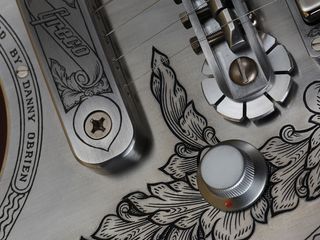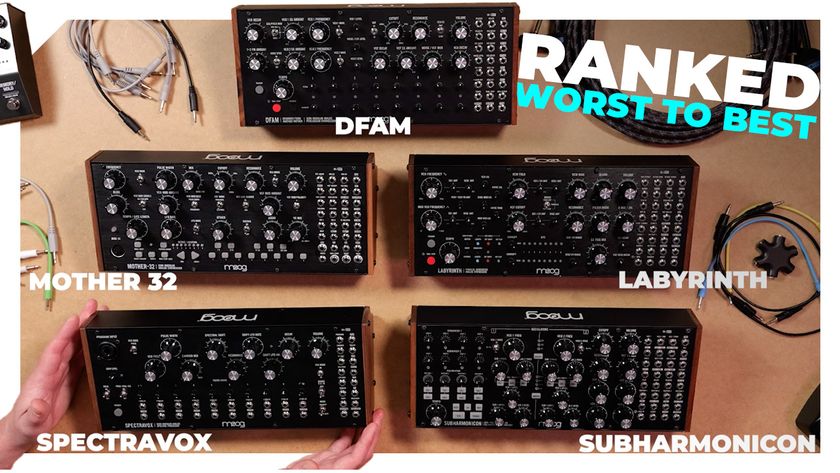MusicRadar Verdict
A looker for sure, this Greco is very nicely made, although lacking many original details. A lot of money for an all-mahogany V-style guitar.
Pros
- +
Zemaitis-like style; playability; sound.
Cons
- -
Lacking original detail; price.
MusicRadar's got your back

AC Zemaitis Greco GZV-500MF

AC Zemaitis Greco GZV-500MF

AC Zemaitis Greco GZV-500MF
How much? Yep, let's not beat about the bush, AC Zemaitis guitars do not fall into the cheap category - but they not only capture the style of the late and legendary Tony Zemaitis but, you've got to admit, they do look pretty cool, huh?
Looks were a crucial ingredient of the original Zemaitis guitars. They were primarily 'stage' guitars, meant to stand out from the crowd - something that the Metal Front, Pearl Front and Disc Front guitars, Zemaitis' best-known designs, certainly did.
A year after Zemaitis passed away in 2002 his wife and son made an agreement with the Japanese corporation Kanda Shokai to ensure the continuation of Zemaitis Guitars. The high-end AC Zemaitis guitars are made in small numbers in a Japanese custom shop; while these Greco versions, licensed from Zemaitis International, are more affordable and made in higher numbers.
Build
At under half the price, the Greco V, initially at least, has the same 'wow' factor as the AC Zemaitis (apparently Tony did make a couple of V-style electrics in his time). There are many differences, however.
The 43mm thick body is two-piece, the neck one-piece. The head facing is rosewood, not ebony, and the head plates, while engraved, have more simple designs and they're actually nickel-plated. The alu top has a 'designed by Danny O'Brien' label and the centre of this plainer design states 'Greco Zemaitis' - the engraving is laser etched and hand-finished. The string anchor just states 'Greco' and the 'engraving' looks like it's painted, not engraved.

There's no top-arching either - the string anchor is designed to sit on a curve so there's a visible gap under it - and the finish, still natural satin (but not nitro), appears a little thicker around the similarly-styled neck-tobody joint. The fretboard is ebony - the frets sit over the binding but don't cut through it - and the neck shape, while very similar, isn't quite as careful, especially the bound edges, which feel more squared.
There's a 'Greco licensed by Zemaitis, Made in Japan' legend on the back of the headstock with a seven-digit serial number above it. Here, the same DiMarzios have bright chromed covers with just master volume and tone, and a three-way toggle.
Sounds
Aside from the usual odd strapped-on feel of a V there's little to criticise tone-wise. It's certainly in the same ballpark as the AC Zemaitis, though there's slightly less ring and resonance, and it's darker and more robust-sounding too. Again we have that crystalline high end that's nicely balanced, not scratchy or sharp, and if anything this one suited heavier, gained tones a little better.
The two controls limit the potential for subtle tone mixes, but again both are nicely graduated. It's overshadowed by the AC Zemaitis, but in isolation, as a classic-to-heavy rock guitar, it takes some beating, and indicates Greco's 'mono-cut' Metal Fronts should tick all the right boxes too.
With original Zemaitis Metal Fronts valued at $30k upwards, these guitars - the closest you can buy to the real thing - don't seem over-priced. But what are we saying? As good as they are neither warrants its price tag - aside from the engraving, they're not difficult to produce and although 'Honduran' (aka South American) mahogany is hard to procure at the right weight and is rapidly getting more expensive, it still doesn't go near justifying this cost.
At three grand, the Greco, as nice as it is, is just a well-made mahogany V with metal bits. But value is very much in the eye of the beholder. If you want a Zemaitis, these guitars and the others in the dual ranges, are the only way to get one - the closest most of us will ever get to the real thing.
Dave Burrluck is one of the world’s most experienced guitar journalists, who started writing back in the '80s for International Musician and Recording World, co-founded The Guitar Magazine and has been the Gear Reviews Editor of Guitarist magazine for the past two decades. Along the way, Dave has been the sole author of The PRS Guitar Book and The Player's Guide to Guitar Maintenance as well as contributing to numerous other books on the electric guitar. Dave is an active gigging and recording musician and still finds time to make, repair and mod guitars, not least for Guitarist’s The Mod Squad.

Ranked: Moog’s semi-modular ‘Mother’ synths from worst to best

“If it wasn’t for that song, that would have been the end of the band”: How one track’s sudden gear-switch led Coldplay into their imperial phase

“He was like, ‘You’ve got it all wrong, man": Mumford & Sons reveal what Neil Young told them about the way they were approaching their live shows and album recordings










